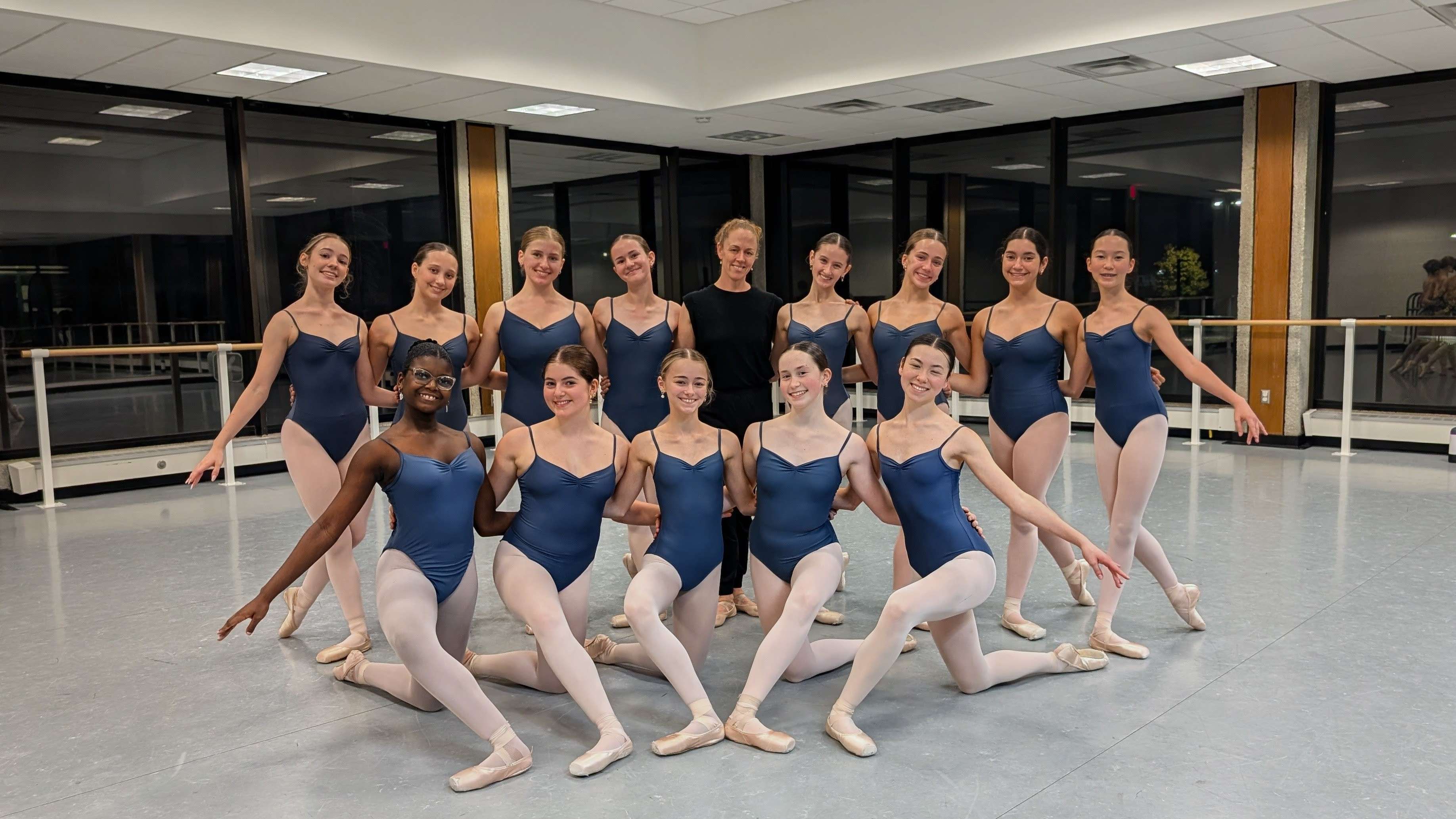Athlete Self-Reporting: How we’re working to better support our dancers’
training, performance and wellbeing
By Alexandra Insinga

While I think I speak for many dance professionals in firmly believing that dancers are, first and foremost, performing artists, as opposed to artistic athletes, there is no denying the athleticism inherent in dancers’ bodies, their training, and in their performances, by way of ever-more-challenging choreographic demands.
Today’s dancers are athletes, even if that athleticism is a means to an end, ideally serving as a tool by which they can enhance elements of their artistry – dynamism, expressivity, agility, control and musicality, to name a few. And if dancers are indeed athletes, why not take advantage of the immense amount of research that has been undertaken in the fields of sport and athletes, to identify the knowledge, practices and tools that might also be of
benefit to dancers?
Certainly, there has been a major increase in dance-specific research, particularly over the last 10 to 20 years. This has resulted in significant strides being made towards better understanding and greater awareness of injury prevention, dancers’ mental health, and their general wellbeing. Even so, these areas are still relatively under-researched for dancers when compared to athletes and various sporting codes.
One practice that pre-professional and elite athletes already commonly benefit from is that of Athlete Monitoring, which is used to track and assess a performer' s response to training and stress. By being aware of the athlete’s current physical and mental states, informed adjustments can be made to the training load, and the athlete can be offered tailored support or advice as necessary. At Draper, we are working on trialing this tool within our
Professional Training Program (PTP); the dancers in the PTP are our advanced level, most of whom are aiming towards careers in the dance industry. These dancers are training a minimum of 18 hours every week, on top of their academic studies. Helping them learn to manage this high workload and deal with the resulting stress on both their bodies and minds (from training, school, or life in general) is critical to enabling these dedicated young dancers to reach their full potential.
Athlete (or, Dancer) Monitoring can be carried out by utilizing a wide variety of measures; there are probably as many measures for Monitoring as there are types of physical activity, so it’s important to choose the most relevant and practical ones for our dancers. Athlete/Dancer Monitoring must be tailored to the needs of the field (in this case, dance) and even each individual within it. Resource availability is also a major determining factor, as well as the need to ensure that the dancers aren’t overly burdened by the process. In considering which measures might be used, it is helpful to categorize them into two basic groups: objective and subjective. Objective measures might include a performer’s Resting Heart Rate, or blood tests to determine various hormonal or biochemical levels in their body. While some objective measures are relatively practical and easy to monitor, thanks to ‘wearable tech’ such as Apple watches, Garmin or Fitbits, many, (for example, blood tests) can be expensive, time-consuming and invasive. Subjective measures, on the other hand, are generally much more accessible. These might include a teacher or coach’s observation of how the dancer is performing or training, or the dancer’s Rating of Perceived Effort (RPE) for a given class or the whole day. Interestingly, RPE and other self-report measures have actually been found by numerous studies to be more effective at determining athlete wellbeing than many objective biomarkers or performance-based tests. In light of this, and given their practically, we have developed a Dancer Self-Report process wherein the dancers complete a brief questionnaire each morning and evening, answering questions about how their body is feeling, as well as reporting on their workload, sleep, nutrition and hydration levels over the previous 24 hours.
With the dancers completing these questionnaires on a daily basis, our faculty can gain a better understanding how each individual is responding to the training load and the pressures of training, performance, academics and family/social life. The practice not only helps us to become better informed about the dancers’ current physical and mental states, but also enables us to use this information to identify areas our dancers might need support
in; we can better focus and tailor the dancers’ workload to optimize their training or performance, minimize the risk of overtraining or injury, and support their overall wellbeing. We also our hope that Dancer Self-Reporting will serve to further open the lines of communication between dancers and faculty, and encourage robust conversation around
the areas being reported on.
In introducing this process, it has been essential to convey to our dancers that their responses are not being judged; honesty is essential for the tool to be valuable. If a dancer’s answers are not deemed ‘right or wrong’, but simply as ‘information’, the faculty can offer more specific guidance in a timely manner, perhaps avoiding a minor issue (such as a niggling ankle pain) become a larger problem (such as a longer-term injury). In addition, the dancer is equipped with self-knowledge about their own body so that they can make intelligent choices about when to rest, when to push themselves, and when to reach out for additional support.
This increased self-knowledge is perhaps the most important benefit we hope to provide our dancers; the process encourages them to develop a deep awareness about how their own body responds to training, their daily routines/habits and other variables (such as hydration, nutrition, rest and stress). Ballet’s culture has a tradition of dancers being ‘seen and not heard’, and the external appearance is (necessarily) focused on so intently; the risk is, that without sufficient knowledge and awareness, dancers tend to push through pain or block out ‘warning signals’ their body sends them in their never-ending quest for perfection that ballet leads them on. We’re aiming to develop dancers who are capable not only of listening to and understanding their bodies, but who can also use that information to make informed adjustments to their habits and training. This knowledge of how various factors influence their ability to train and perform at their best will serve them throughout their life, not only as dancers, but in any field they may choose to move into.

